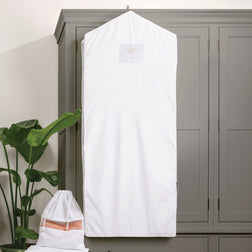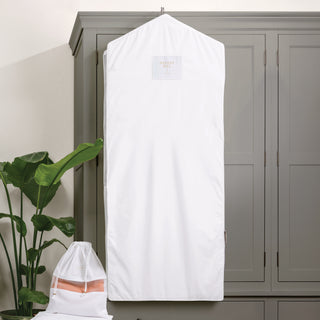
How to Identify Clothes Moths and Carpet Moths: Key Features and Tips
The most common clothes moths are the Webbing Clothes Moth, easily identified with a golden colour and around half an inch in length, and the Case-Bearing Moth, which can be identified about ½ inch long and their forewings are mottled brown with one large and a few smaller indistinct black spots.
These moth species can attack clothes and other home textiles, and are commonly known as clothes moths or carpet moths depending on where their larvae are found causing damage.
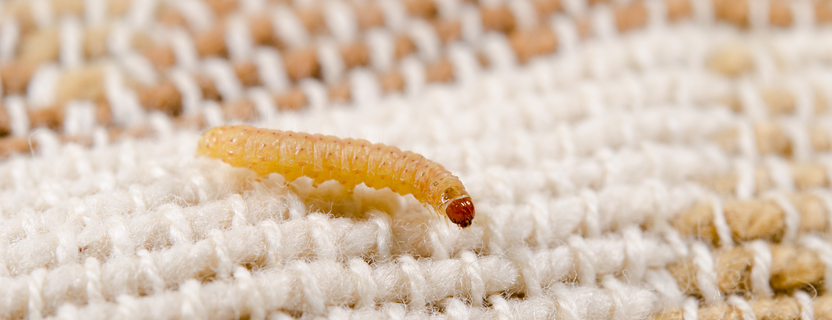
Webbing Clothes Moth & Case-Bearing Clothes Moth
It is important to note that Clothes Moths and Carpet Moths are not separate species - the species of moths that attack clothing and carpets are the same - they are commonly called ‘clothes’ or ‘carpet’ moths depending on where they are found and what fabrics they target.
It's also important to note that these moths are looking for animal-based fibres to lay their eggs - think wool, merino, cashmere, silk, feather, fur.
The reason that it is animal-based fibres only is that the larvae of clothes moths and carpet moths feed on keratin - a protein found in animal fibres, and also in dust. A large proportion of dust is made up of human skin cells and hair shed day to day in homes. There are two main moth species that cause most of the damage to clothing and home textiles. They are the Webbing Clothes Moth and the Case-Bearing Moth.
There are two main moth species that cause most of the damage to clothing and home textiles. They are the Webbing Clothes Moth and the Case-Bearing Moth.
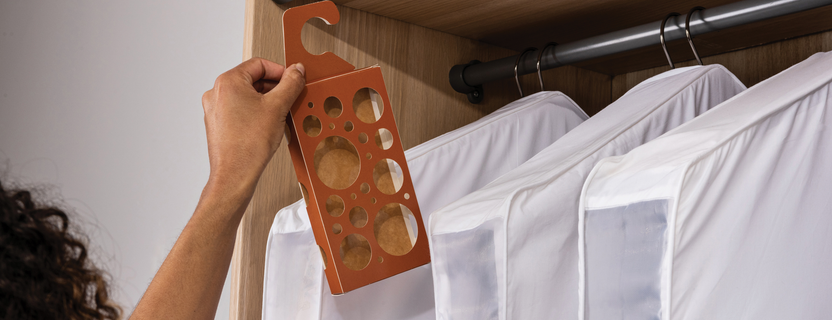
The Life Cycle of a Carpet Moth & Clothes Moth
The carpet moth has a very similar life cycle to a clothes moth. The adults do not live long and the mated adult female lays hundreds of eggs in her short life time. The eggs will be laid in the quieter, darker and undisturbed areas of carpets and rugs and lay dormant for approximately 4 to 10 days before hatching.
The larvae can live for up to 2 years which accounts for continued damage as they eat through the winter months, but in warmer periods they will pupate within 2 months of hatching, resulting in a number of cycles through the Spring to Autumn months. The pupation stage will last up to 2 weeks before the adults emerge. The adults are relatively harmless and only live 2-3 months, but the issue and risk to property is clearly the risk of further egg laying and the infestation getting out of land, hence the need to deal with both adult and larvae stages of the carpet moth lifecycle in treatment routines.
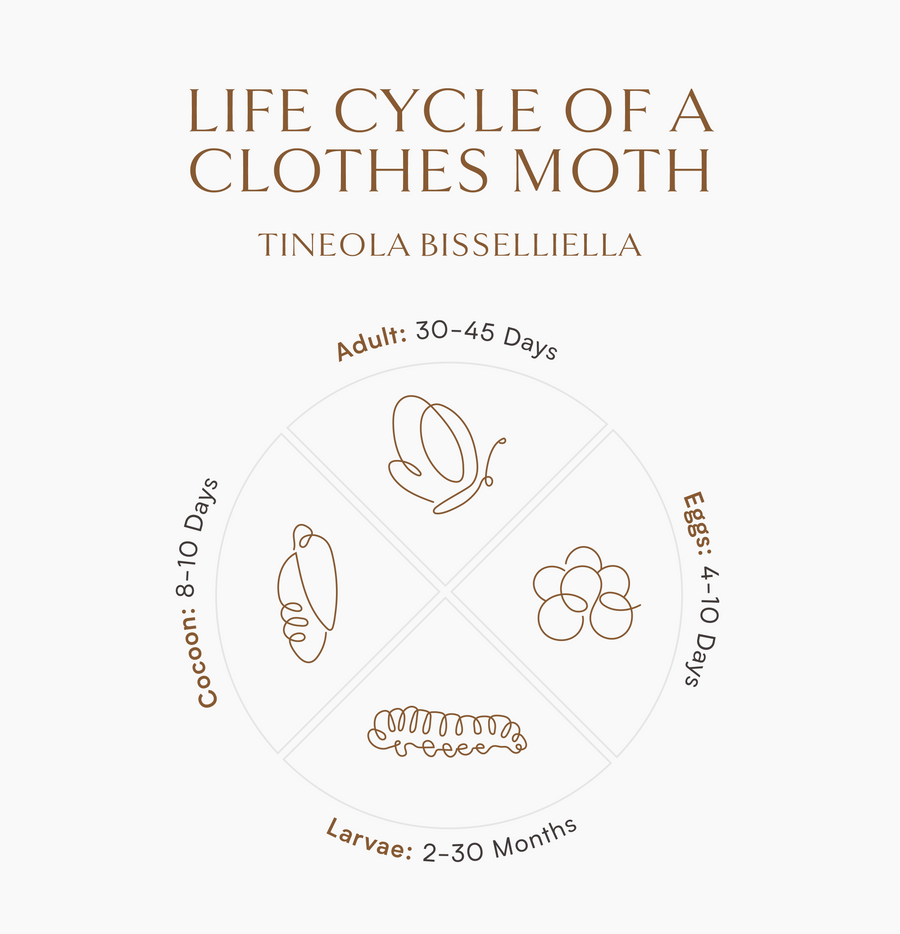
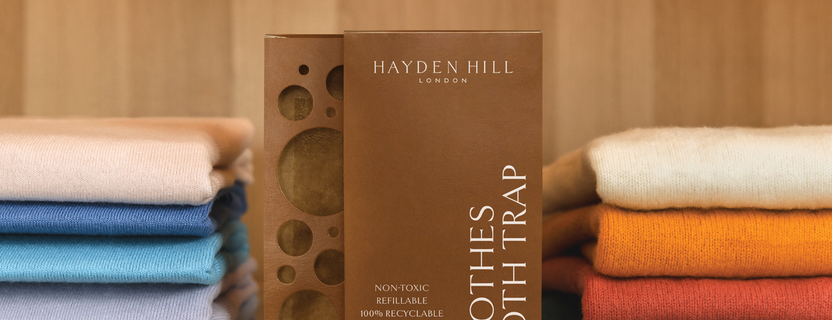
Clothes Moth Traps
Hayden Hill Clothes Moth Traps combine functionality with a sleek, discreet design that seamlessly blends into your bedroom and closet spaces. These traps are thoughtfully crafted to complement your aesthetic while effectively targeting male Webbing Clothes Moths and male Case-Bearing Moths using specific pheromones. Unlike those needed for pantry moths, such as the common Indian Meal Moth, these pheromones are tailored for clothes moths, making proper identification crucial for effective pest control and prevention.
SHOP MOTH TRAPSFrequently Asked Questions
Moths are not attracted to the wardrobe, but to the delicious food source within it - your clothing - which will keep their larvae happily fed until it is time to pupate. Your woollens, silks, and any animal based fibres are at risk. Since they are always seeking out food for their offspring, the best way to keep moths out of wardrobes is to make the environment as unfavourable as possible. To deter Moths from laying their eggs on the garments in your wardrobe you can take the following steps: Store clothing in garment bags or air tight containers; Ensure clothing is clean before storage; Spray all-natural moth repellent inside the wardrobe; Use Clothes Moth Traps which use powerful female pheromones to attract the adult male moths.
Moths prefer dark areas that go undisturbed for long periods of time, such as the back of your closet. Keeping your closet moth-free requires a few steps and countermeasures, including airing out your clothing regularly, dusting and vacuuming up debris, using Pheromone Clothes Moth Traps, and utilizing natural repellents around the room. Moths do not like lavender, cloves, and cedar, so place some sachets or potpourri in your closet or consider using a non-toxic spray on some clothing that won’t get damaged by it.
Getting rid of moths in a closet can be difficult if you don’t know what to look for. The first step is to identify the kinds of moths infesting your closet. Once you know what you’re dealing with, you can purchase the correct Pheromone Clothes Moth Traps. Start vacuuming and wiping everything down with white vinegar or a Moth Killer spray which will kill off moths, larvae and eggs. Thoroughly infested, badly damaged items may need to be thrown away. Clothing with mild damage can be salvaged. You can take these items to the dry cleaners or freeze them at 17 degrees F/-8 degrees C for several days.
Yes, there are plenty of ways to eliminate Clothes Moths in the wardrobe or cupboard without mothballs, from Clothes Moth Traps which catch the adult males and help break the breeding cycle, to Moth Foggers and Moth Killer Sprays. The MothPrevention Moth Killer Kit provides you with all three of these products to tackle a moth infestation. Bear in mind that Natural repellents, such as lavender and cedar, will only act as a deterrent against Clothes Moths but will not kill them. Otherwise, routine cleaning, laundering your items before putting them in storage, using airtight containers, and essentially cutting off their food supply will eventually get rid of all the moths in your home.
If you are wary about using strong pesticides, chemicals, or mothballs around your home, don’t worry. There are a plethora of natural, non-toxic repellents and deterrents that will keep moths out of your wardrobe and cupboards. This includes scents like lavender, cloves, and cedar chips. Pheromone Clothes Moth Traps are also a non-toxic solution for keeping moths away from your precious clothing.
Yes, cleaning and vacuuming are crucial to keeping moths out of your wardrobe and getting rid of them for good. Cleaning with a disinfectant, white vinegar or a formulated Clothes Moth Killer spray will kill moths, eggs and larvae. Vacuuming picks up any eggs and larvae, as well as frass, from damaged rugs and anywhere the moth larvae may be hiding. In short, vacuum and clean often.
House moths can enter the home in a number of ways. If you purchased clothing from a secondhand store, moth eggs may be laying in wait to hatch. The best way to prevent moths from getting inside is to be proactive. For example, if you bought secondhand clothing, air outside in the sun or cold for a few days and then wash or dry clean immediately. In clothes storage areas, keep humidity low. Moths are attracted to humidity and any moisture that gets into clothing.
If your question is not answered here, please check out our FAQ page.
Read More FAQs
